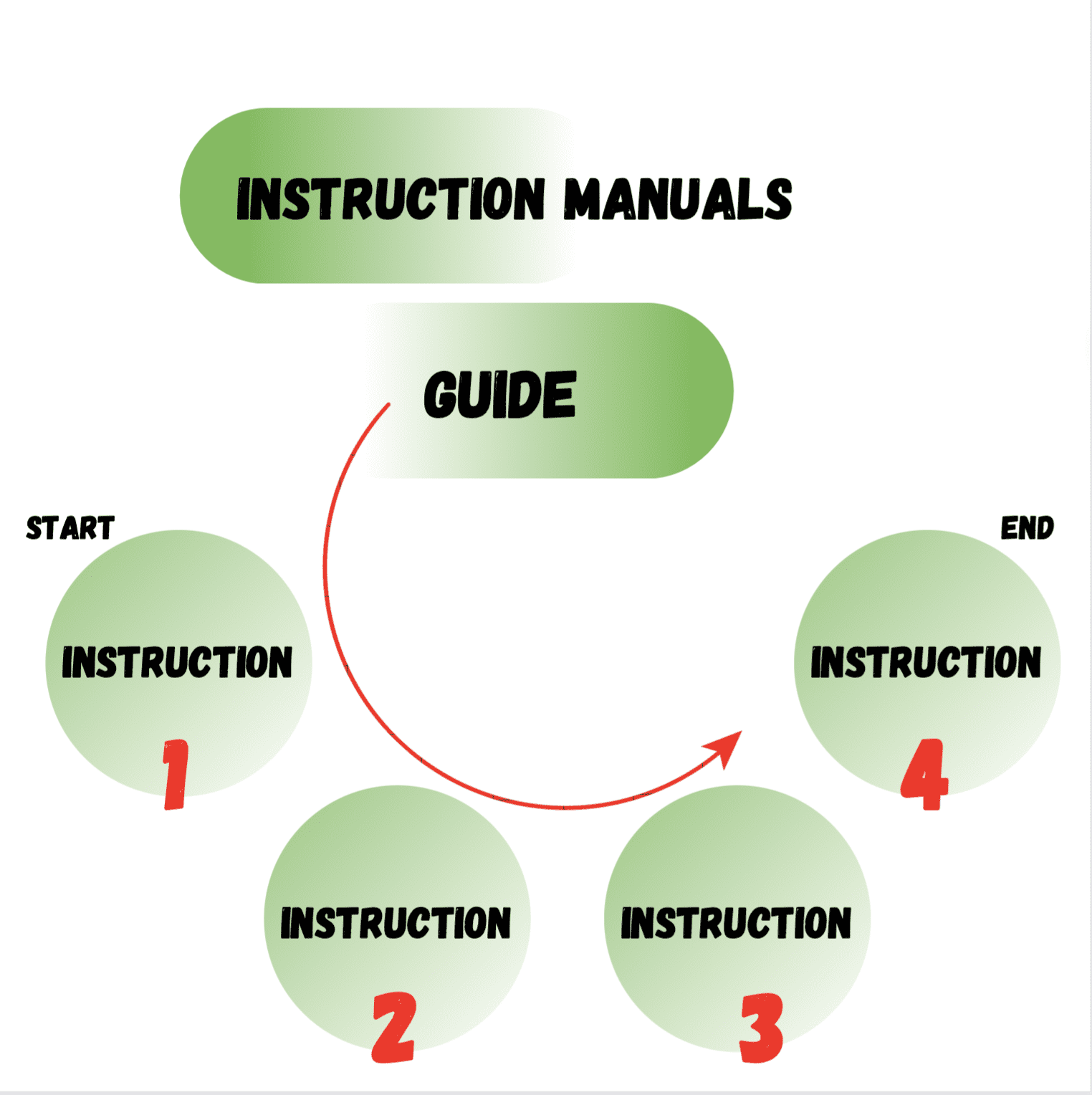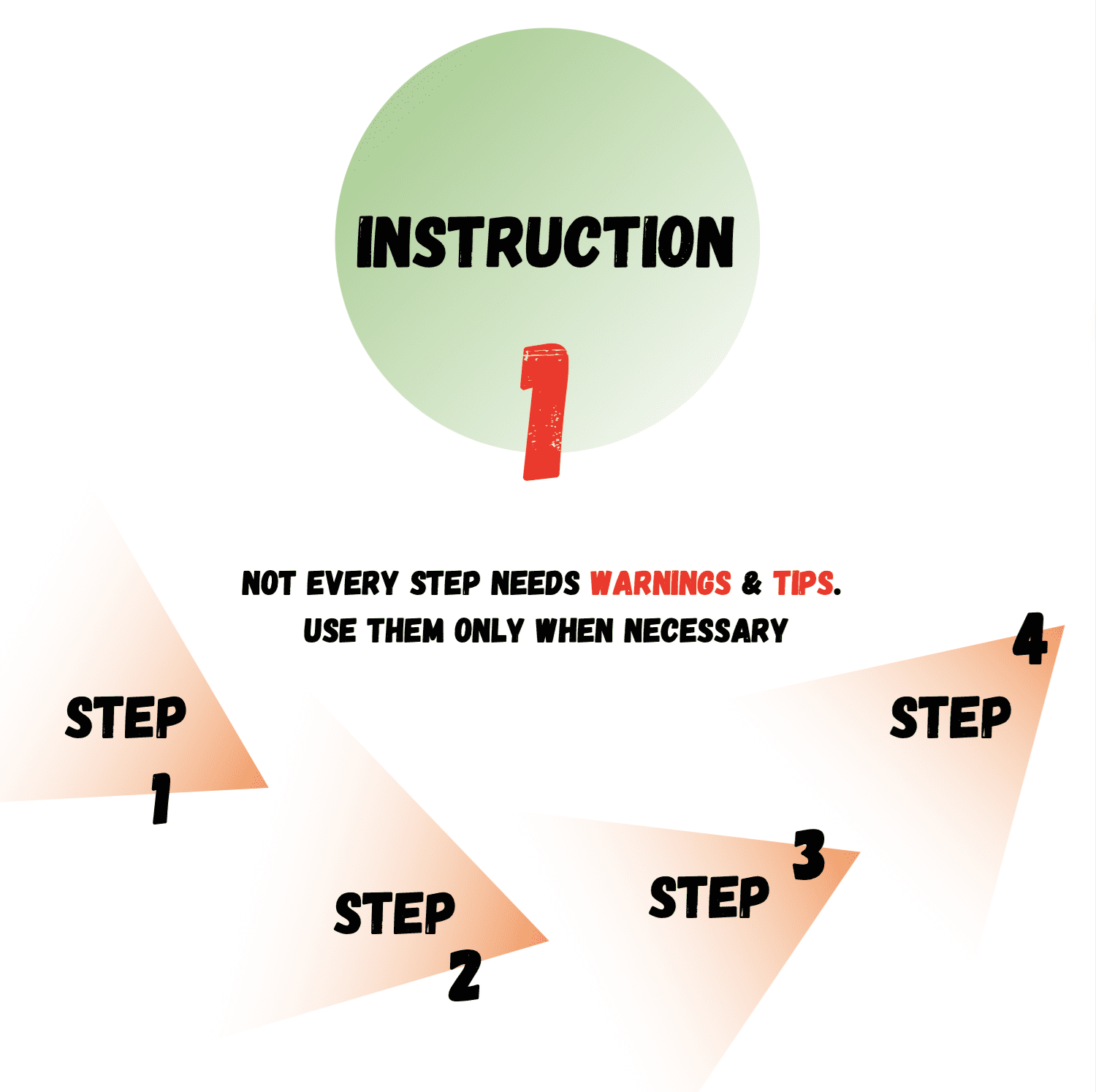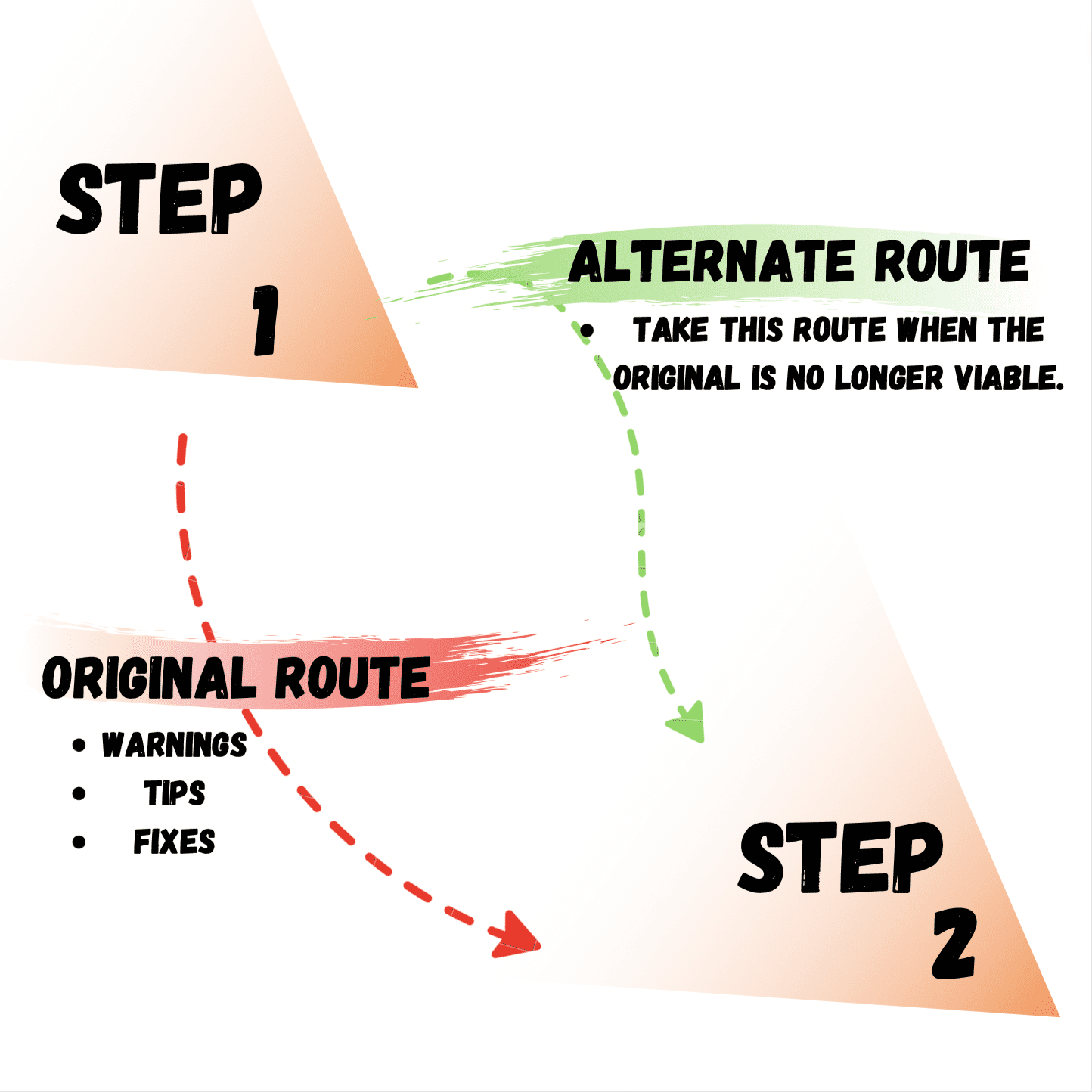
Have you ever dove deep into a new concept and felt frustrated because it seemed like you weren’t learning the material? If you have, then you’ll remember the feeling of just how discouraging it can be. Well, if you haven’t heard it before, then let me be the first to tell you that instruction manuals come in handy for these types of situations. The best part is that instruction manuals are so versatile, that they can be created for multiple purposes.
Our technical writers and content writers here at Essential Data Corporation have completed several instruction manuals and collected a variety of principles that have worked for us. Furthermore, we want to share them with you!
What is an instruction manual?

An instruction manual is a guide that provides a set of instructions with step-by-step courses of actions to complete a task. Our technical writers have found that successful instruction manuals will contain multiple specific sections, more pictures than words, diagrams, and color. Studies show 90% of the information we absorb is done visually; additionally 65% of the U.S. population are visual learners. This supports the need for more pictures than words in instruction manuals.
What are instruction manuals used for?
Instruction manuals are typically used to introduce a product/service to the end user. Moreover, it’s an opportunity for the end user to gain knowledge and receive proper training.
Instruction manuals are so versatile that they can be used for a multitude of purposes. For example, they can be used to learn every function of Microsoft Excel, helping explain and break bad user habits. It can be used to train K-12 teachers on creating lesson plans or dealing with student behavior issues. Perhaps they could be used to train new employees on handling heavy machinery at a manufacturing company. Instruction manuals could even be used to explain to consumers how every function of their iPhone works, or how to set up their new IKEA furniture. The possibilities are infinite.
How do I create an instruction manual template? What are the most important sections?
Each instruction manual can vary based on the design and content itself. Therefore, single-sourcing an instruction manual can be difficult. However, what we can tell you is that an exceptional instruction manual will be structured into multiple important sections.

The structure of this diagram to create instruction manuals will help break down complex tasks, thus increasing efficiency, comprehension, and retention of material.
It is important to note that information from the structure of an instruction manual needs to be minimalist while actions are broken down just enough for the end user to be able to go at their own pace.
In addition, consider using colors to distinguish sections; this can signify the beginning and end of a section. Similarly, put more thought into what different colors you use for different sections. Just like a traffic light or an elementary behavior board; green means go/good, yellow signifies warnings/caution, and red can mean stop / bad.
Guides
The guide of an instruction manual can be a sort of diagram that captures the basic concepts needed to complete the instruction manual course. End users can always refer back to the guide to measure their progress.
The guide will usually only show the instructions – the next important section.
Instruction

Several listed instructions form the guide. The purpose of instruction is to bring users from the start to the desired state. Similarly, it gives the end user a chance to digest everything they will learn from the instruction manual.
Instructions do not need to be deeply detailed. Moreover, instructions will be made up of several detailed steps.
Use separators and colors to distinguish the beginning and end of each instruction module

Steps
This section serves as the next set of actions to take for an end user. Steps are dependent in that you cannot move on to the next step without completing the current task. They are always written with a clear goal in mind and they are task-oriented.
Consider using active versus. passive voice as it can cause the reader confusion which results in less material retention. Similarly, you need to use more action verbs when writing up steps such as install, press, click, follow, etc.
Our technical writers also recommend not to make steps too lengthy. One through two actions per step are ok to have. Moreover, there should be an average of ten through twelve steps per instruction. However, if the end-user needs to memorize tasks then the instructions should include fewer steps. Having too many steps can be overwhelming when having to memorize content, which is why we recommend five through seven steps.
*picture – Note that not every step requires warnings, tips, alternate routes, or fixes. They should be used only where they are needed. An exaggeration of these elements will hinder the learning process.
Warnings

Warnings are most useful when working in the manufacturing industry. They can help by notifying end users who have to work with hazardous equipment.
Moreover, other industries can also use warning sections. For example, an instruction manual for a software program might warn the user of commonly made mistakes when using the program.
Similarly, having warnings in the K-12 education industry can also help. Warnings could be used to foretell common negative reactions from students as responses to certain steps taken by the teacher.
Warnings can be very helpful in preparing the end user to respond accordingly and transition smoothly to the next step.
Tips
This section serves more as an additional space to give more detail on completing complex tasks. When a task requires a judgment call from the user, it may be helpful to describe what has worked for others in the past.
If a judgment call can have a tremendous impact on the outcome, then we present to you alternate routes.

Alternate Routes
These routes are essentially other pathways an end user can take that still lead to the same goal. Alternative routes are not a necessity but they can most definitely help in unplanned scenarios.
For example, a very similar situation happens when you are on your way to work and your GPS informs you that there is an accident ahead with a 15-minute delay. Your GPS will automatically give you an alternate route that saves you time. The same concept of alternate routes can be applied to instruction manuals
Fixes
This section is here in the case that an alternate route is not possible. The situation likely took a turn for the worst – whether it was related to a product or service.
A great content writer will have to take into account several possible scenarios in which a product/service will suffer from errors. They will need to provide detailed instructions on fixing the error.
Fixes can come in the instruction manual itself, or perhaps in a separate form itself; such as a quick reference guide. The reason being is that fixes can often take a detour in the opposite direction of the intended purpose of an instruction manual.
What are the benefits of instruction manuals?
The benefits of creating instruction manuals can help the end user be more productive, efficient, and comprehensive, and overall improve their learning process. Instruction manuals can also be unique in the benefits of each industry. For example, learning to properly use a product or learn more about services through instruction manuals could very well increase sales. Similarly, they can be just as helpful when properly training employees; thus streamlining and increasing the output.
I can assure you that learning how to create instruction manuals is not rocket science. Moreover, it can be easy to leave out important information; it’s just as easy to include unnecessary information. It can be a delicate situation if it hinders the learning process of the end user.
What other forms of instruction manuals do technical/content riders create?

Perhaps you may be wondering if an instructions manual is what you need. If you need more information and want to investigate for yourself, the following articles are different forms of documentation very similar to instruction manuals. However, each serves different purposes and is unique in its own way.
- Home Care Procedure
- Software Documentation
- Hotel Staffing Training Manual
- Audit Documentation
- Quick Reference Guides
- Operation and Maintenance Manuals
We wish you the best of luck in creating instruction manuals! Do not be afraid to reach out if you need more professional help.
How Essential Data Corporation can help you

Whether you need a single technical writer for a brief project or a team of consultants to produce a complete line of documentation, the quality of our work is guaranteed for you. Our clients work closely with an Engagement Manager from one of our 30 local offices for the entire length of your project at no additional cost. Contact us at (800) 221-0093 or [email protected] to get started.
Written by Pablo Mota
